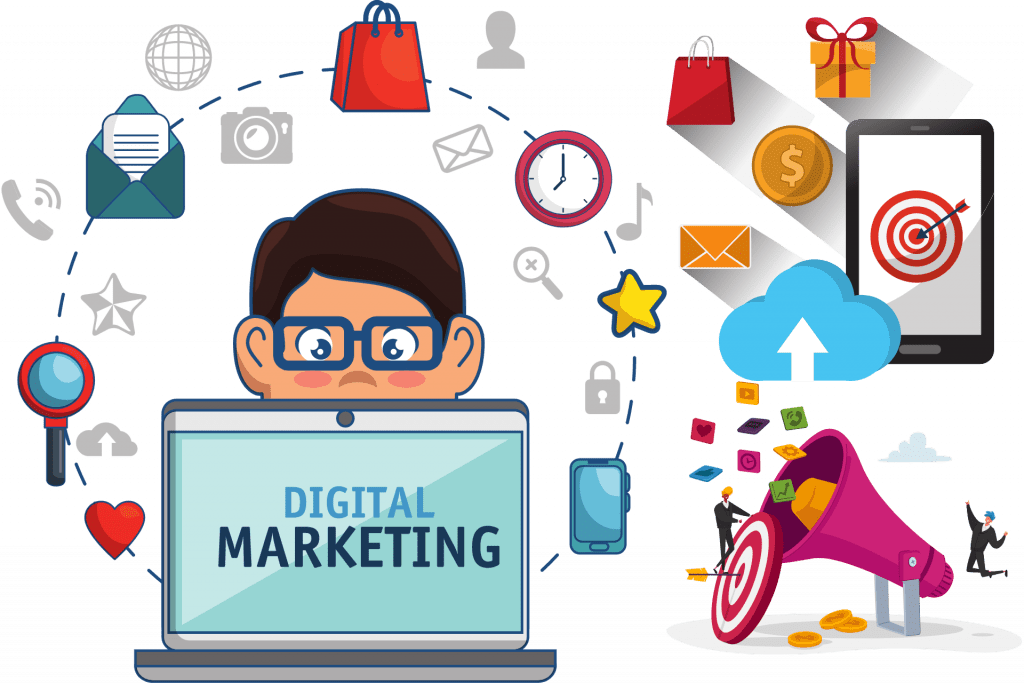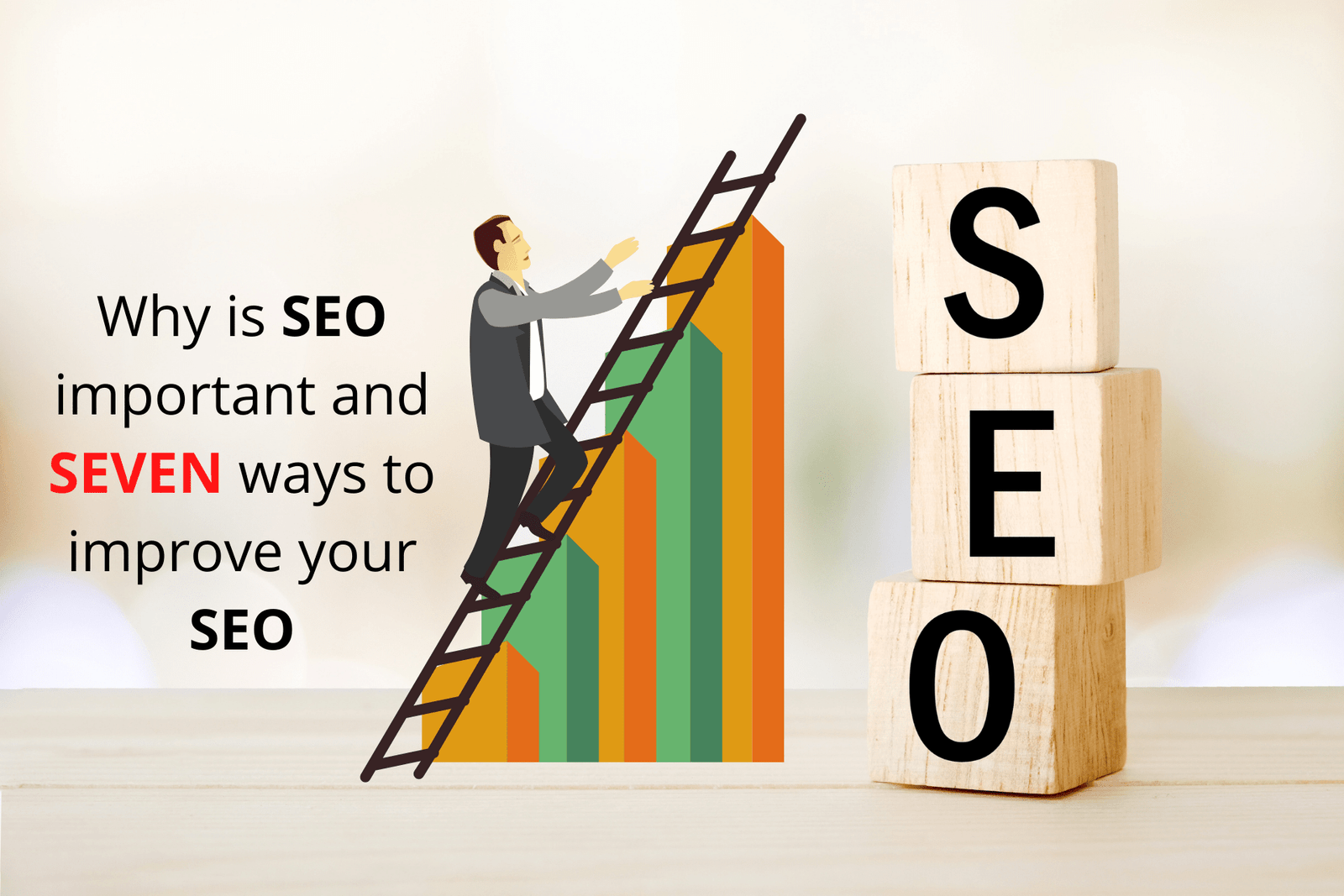Beginners Guide to Digital Marketing 101

The digital marketing world is constantly changing and evolving, so it can be difficult to keep up. It’s impossible to know everything about digital marketing, but there are some basic things that you should know before starting your own digital marketing campaign. In this blog post on A Beginners Guide To Digital Marketing, I will give you a beginner’s guide to digital marketing – from online advertisement to social media campaigns!
Digital Marketing is the digital equivalent of marketing from a business perspective. It encompasses all digital efforts that are used to promote products or services, build awareness and drive sales.
What is digital marketing? Digital marketing is an umbrella term that refers to the many ways businesses can reach prospective customers online, including content publishing and social media campaigns. In this digital era, every business is looking for digital marketing ways to reach their target customers. Digital marketing has evolved as digital technology, and the way people interact with it continues to change.
As we move away from traditional digital marketing techniques such as websites or banner ads in favor of more sophisticated digital media like social media advertising, online video content, and mobile apps – so too have our expectations about what constitutes “digital marketing.” This Beginners Guide To Digital Marketing will illustrate how digital marketers are now using various tools that fall under this broad umbrella term to reach their target audiences through various channels. It also provides advice on which digital strategies businesses should utilize when running an online campaign.
Creating Your Website
The first step for this Beginners Guide To Digital Marketing starts with the website. Your website is the most important digital asset that you own. It’s also one of the most important digital marketing assets that you have. You can’t go wrong with a strong, professionally designed website if your goal is to attract new customers and establish credibility in your field.
There are two popular ways for small businesses to create their own website: purchase or hire an online company to build it OR learn how do-it-yourself (DIY) by using WordPress (a free software) or hosted platforms like Wix. If you want more control over every aspect of your site, DIY may be right for you. However, keep in mind that there will be some upfront costs involved before anything else happens; not just time but money as well—particularly if web development knowledge isn’t on hand within the organization already.
Creating your own website can be challenging. It requires a learning curve. And building an optimized website not only requires knowledge but knowhow that comes with experience. You also need a guide to digital marketing to ensure that your website is optimized for the digital marketing efforts that will commence once your website is live. If you’d rather not go through the process of building a website from scratch, there are two main options:
One way to create a professional-looking website is by hiring a digital marketing company or making your own site with an open-source software program that most people find easy to use. Do It Yourself (DIY) sites can be cheaper at first, but you’ll likely need to hire outside help for web development once things take shape. If hiring an outside digital marketing company is too costly or unappealing for some reason then consider recruitment agencies that specialize in digital marketing and have proven track records with clients like yours. They might offer contractual developers who will build you a professional-looking website.
Search Engine Marketing (SEM)
The second step to the Beginners Guide to Digital Marketing starts with Search Engine Marketing (SEM). SEM is a digital marketing tool that essentially capitalizes on the way people use search engines like Google, Bing, and Yahoo to find information. SEM is great for businesses who want their online presence to be seen by as many potential customers as possible.
Search Engine Marketing (SEM) can also help you increase your site’s traffic from web users in general or more specifically from mobile phone owners, executives at large corporations (C-level), business consultants, prospective clients of all kinds, and so forth. It may not always be in the best interest of every company but it will undoubtedly affect any website owner regardless of size or industry if they’re active with digital marketing strategies such as this one. This digital marketing strategy works because the products or services that companies offer are in demand for a specific set of customers. The key is getting in front of those prospective buyers.
Search Engine Optimization (SEO)
No Beginners Guide To Digital Marketing can be complete without SEO. As per a report published by Hubspot, the first organic position on a Google search has a 31.35% click-through rate. No doubt everyone wants to rank on the first page of search engines. SEO is the process of promoting a website by increasing its visibility in search engine results pages.
There are two main processes involved: On-page optimization and Off-page optimization. On-page optimizations include keyword research, proper use of keywords for digital marketing, selecting an appropriate domain name, relevant content, etc. Whereas off-site optimizations refer to link-building activities that help you rank higher in SERPs (Search Engine Results Pages) such as press releases, submissions, or article marketing campaigns among other things. Although we will not cover SEO in detail in this Beginners Guide to Digital Marketing, you can check out our other Blog on SEO whose link is given below.
Any digital marketing carried out through a Social Media platform is called Social Media Marketing. This forms an important component of any Beginners Guide To Digital Marketing. It primarily focuses on marketing through digital channels. Most social media platforms offer a range of targeting options and features allowing businesses to largely target the customer base they are looking for, whether it be in terms of geographic location, age, or gender.
Since Facebook’s launch in 2004, there have been over one billion monthly active users by December 2017. The platform now has more than 20 million advertisers who spend around $12 million per day promoting their products and services! This is the perfect place to start if you want to get started with Social Media Marketing (SMM). With an audience that big, all you need is a small budget. With the right digital strategy, you can be in front of your target audience without spending too much.
Apart from Facebook, you can also advertise on LinkedIn, Snapchat, Instagram, and Pinterest. The digital marketing sphere is constantly evolving. New developments to digital marketing such as Artificial Intelligence (AI) will undoubtedly play an important role in the future of digital marketing strategies. AI has been able to automate tasks that would ordinarily take humans years or decades to complete – from driving cars on our roads without incident, teaching our children new skills, or even discovering cures for life-threatening illnesses!
Video Marketing
The most in-demand marketing strategy in 2021 is video marketing strategy. And as part of this Beginners Guide To Digital Marketing, we will touch upon this important aspect of marketing. Video marketing is simply using long reeled and short reeled videos to promote your products and services. These days, since consumers have very little time, the easiest way to communicate with them is through the use of videos.
Video marketing delivers a number of benefits that digital marketers can’t ignore. Firstly, it provides better engagement rates as consumers spend an average of two seconds longer on video advertisements compared to other types of digital content. Secondly, videos are more interactive and they enable online viewers to see the product in action which helps them make purchase decisions faster. Finally, video ads provide greater ROI for advertisers with 85% of all digital advertisers using them last year reporting higher conversion rates than their non-video counterparts.
YouTube videos have become a digital marketing staple for digital marketers as they are easy to create, upload and share across a variety of social media platforms.YouTube videos can be used in a number of ways from educating the audience about your product or service, sharing behind-the-scenes footage, or showcasing customers using them. Video content has proven successful at attracting an online following with advertisers like Nike having over 11 million subscribers worldwide.
YouTube’s automatic algorithms also allow digital marketers to target specific audiences based on their age, gender, and interests which increases engagement rates by up to 40%.If you’re looking for better ROI then it’s time to start planning your digital marketing strategy around video ads today!
Tracking Digital Marketing using Analytics
None of the methods mentioned in this blog are of any use if you are not monitoring your campaigns and tweaking them to increase your conversions and revenue. Without proper tracking mechanism in place, any Beginners Guide To Digital Marketing would be incomplete. That is where digital marketing analytics comes in.
Google Analytics: Google Analytics provides a wealth of information about your website, including the number of visitors and the sources those visitors came from. It also tells you how many people are converting into customers or leads on each page that they visit. This data helps digital marketers understand what their audience wants so they can give it to them more effectively.
Search Engine Optimization Tools: Search engine optimization (SEO) software like SEMrush analyzes search queries for potential keywords opportunities and suggests strategies for improvement which digital marketer may not have thought about otherwise. They do this by analyzing other websites ranking factors such as backlinks, keyword density, and content length among others to find out what really works.
KPIs are the Key Performance Indicators and Metrics are the numbers that report on these KPIs. Defining KPIs and how to measure them is crucial in the success of your digital marketing strategy.- The digital marketing metrics given below are from a Google Analytics account and they report on how these KPIs can be measured online:- Visitors, Pages per Visit, Bounce Rate, Average Time on Site, % New Visits.
The most important metric that you should care about is conversions. Conversions show if your efforts generated revenue or not by looking at conversion rate (the percentage of visits which resulted in some kind of action) or goal completions. For example: If 100 visitors. Unless you measure, you will not be able to improve. So this last step is paramount to your digital marketing success.
Now that you have gone through the Beginners Guide to Digital Marketing, you know what digital marketing is, the ways to do digital marketing and how you should measure your marketing effectiveness, you can take the first steps in starting your digital marketing campaign.










Social Media Marketing (SMM)